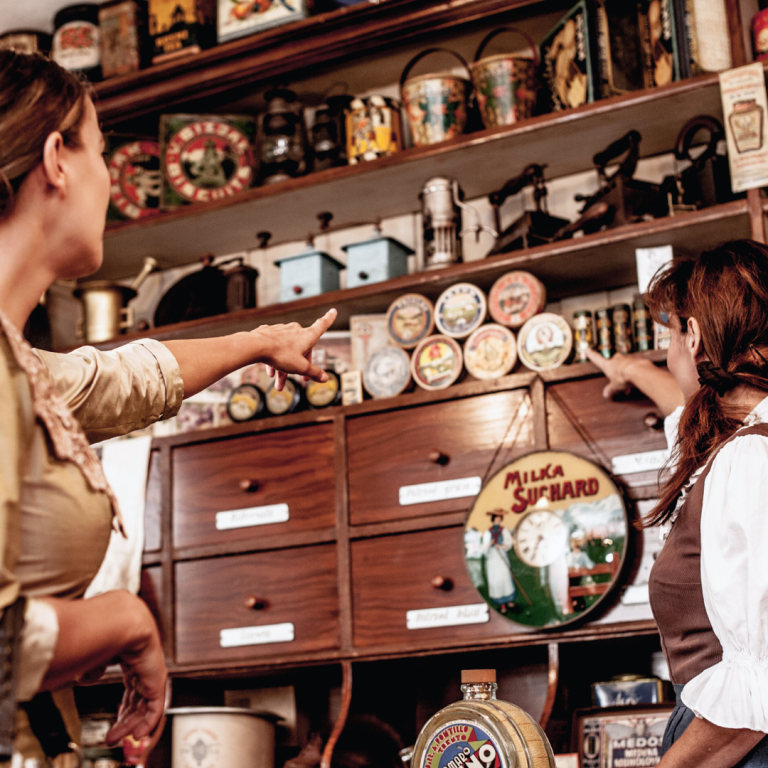Exploring the world’s finest museums offers a captivating journey through culture, architecture, and art history. The best museums not only showcase extraordinary collections but also serve as architectural marvels that reflect the societies in which they reside. Each museum presents a unique narrative, inviting visitors to discover the stories behind renowned artworks and historical artefacts.
From the iconic Louvre in Paris to the innovative Museum of Modern Art in New York, these institutions play a crucial role in preserving and presenting human creativity. They are not merely buildings filled with art; they are living spaces where culture thrives, sparking curiosity and inspiring generations.
For those seeking to enrich their travel experience, visiting these museums provides insight into the diverse artistic expressions and historical contexts that shape our world today. Exploring these incredible places reveals the profound connections between art and the cultures that create it.
Iconic Museums and Their Masterpieces
Several museums around the world house unforgettable masterpieces, each reflecting unique cultural heritages and artistic achievements. Highlights include the world-renowned works of art from the Louvre, the Vatican Museums, the State Hermitage Museum, and the British Museum.
The Louvre and the Mona Lisa
The Louvre in Paris is the largest art museum globally, known for its vast collection. Among its treasures is Leonardo da Vinci’s “Mona Lisa,” which attracts millions of visitors each year.
The “Mona Lisa” is famous for her enigmatic expression and mastery of sfumato, a painting technique that creates a delicate transition between colours. The museum itself is striking, with a glass pyramid entrance contrasting the historic building.
Other notable works include the “Venus de Milo” and the “Winged Victory of Samothrace,” which embody classical beauty and artistry. Together, these pieces highlight the Louvre’s significance as a centre of art and history.
The Vatican Museums and the Sistine Chapel
The Vatican Museums are home to an extensive collection of art and historical artefacts. The most notable highlight is the Sistine Chapel, where Michelangelo’s ceiling painting “The Creation of Adam” captivates visitors.
This fresco, depicting God reaching towards Adam, exemplifies Renaissance artistry and humanism. The chapel also features intricate frescoes by Raphael, which adorn the walls and illustrate Biblical stories.
Visiting the Vatican Museums allows one to experience the intersection of art and spirituality. Each room reveals masterpieces that contribute to the narrative of Western art history, making it a vital location for art enthusiasts.
The State Hermitage Museum and the Winter Palace
Situated in Saint Petersburg, the State Hermitage Museum is one of the oldest and largest museums in the world. The museum occupies the Winter Palace, a former royal residence adorned with stunning architecture.
Its collections include over three million items, showcasing works from Leonardo da Vinci to Rembrandt. The museum’s highlights include the vast array of Impressionist paintings and the exquisite decorative arts from various cultures.
The main staircase, adorned with stunning sculptures, welcomes visitors into a world of artistic grandeur. The Hermitage’s rich history and immense collection make it a must-visit for any art lover.
The British Museum and the Rosetta Stone
The British Museum in London holds a comprehensive collection of world art and antiquities. Among its numerous treasures is the Rosetta Stone, a key to understanding Egyptian hieroglyphs.
Discovered in 1799, the stone features the same text in three scripts: Greek, Demotic, and hieroglyphic, enabling scholars to translate ancient Egyptian writing.
The museum’s Egyptian Rooms house a vast collection of mummies and artefacts that reflect ancient civilisations. With items from all corners of the globe, the British Museum offers an insightful journey through human history and culture.
Global Art and History
The exploration of global art and history reveals significant cultural narratives and artistic achievements. Each of the following museums stands out for its remarkable collections and dedication to preserving historical legacies.
The Apartheid Museum and Nelson Mandela
The Apartheid Museum in Johannesburg provides an in-depth look at South Africa’s struggle against apartheid. It is dedicated to Nelson Mandela, whose life symbolises the fight for freedom and equality. The museum employs multimedia exhibits, photographs, and artefacts to convey personal stories and historical facts.
Visitors can engage with poignant narratives, such as those highlighting Mandela’s imprisonment and eventual release. The exhibits also challenge visitors to consider the impact of apartheid on the nation’s identity.
The museum’s architecture itself reflects the harsh realities of the apartheid era, enhancing the educational experience. By visiting, one gains insight into the resilience of a nation and the enduring quest for justice.
Museum of Qin Terracotta Warriors and Horses
Located in Xi’an, China, the Museum of Qin Terracotta Warriors and Horses is an archaeological marvel. Discovered in 1974, the site features an estimated 8,000 life-sized figures created to accompany China’s first emperor, Qin Shi Huang, in the afterlife.
These intricate sculptures serve as a testament to the advanced craftsmanship and artistry of that time. Each warrior has unique facial features, clothing, and expressions, reflecting the diversity of the imperial army.
Visitors witness the scale of this historical site, understood not only as a burial site but as an insight into ancient Chinese beliefs and practices. The museum plays a crucial role in preserving this World Heritage site, attracting millions each year.
Museo del Oro and Pre-Colombian Gold
The Museo del Oro, or the Gold Museum, in Bogotá, Colombia, celebrates the rich history of pre-Columbian cultures through its extensive collection of gold artefacts. With over 55,000 pieces, the museum illustrates the skill and artistry of indigenous peoples prior to Spanish colonisation.
Highlighting various techniques, these gold items served not only as adornment but also held significant cultural and religious meanings. The museum’s displays often focus on the mythology surrounding gold in these societies.
Educational programs and special exhibitions further enrich the visitor experience. This museum stands as a vital cultural institution, preserving and presenting the legacy of Colombia’s diverse heritage through its exquisite collection.
Contemporary Art Spaces
Contemporary art spaces play a crucial role in showcasing modern artistic expressions. They house works that challenge, provoke, and inspire audiences, reflecting current societal and cultural narratives.
Tate Modern and British Art
Tate Modern, located in London, is a leader in contemporary art. Housed in a former power station, its vast Turbine Hall regularly features large-scale installations by renowned artists. The museum’s collection includes significant works by Pablo Picasso and other influential figures of the 20th century.
The Tate’s exhibitions often highlight British artists, offering visitors insights into regional narratives. The museum engages with themes such as identity, politics, and the environment, ensuring that contemporary art remains relevant and accessible. Alongside its educational programs, it serves as a vibrant centre for dialogue around modern art’s impact.
MoMA and the Influence of Modernism
The Museum of Modern Art (MoMA) in New York is a prominent institution dedicated to contemporary visual culture. Its collection features iconic works from influential modern artists across various movements, including Impressionism and Abstract Expressionism.
MoMA has played a significant role in nurturing and exhibiting contemporary art. Notable exhibitions have included artists such as Jackson Pollock and Paul Gauguin. The museum’s dedication to education and public engagement fosters a deeper appreciation for modern art’s evolution and its ongoing dialogue with contemporary issues.
The Getty Center and Californian Innovation
The Getty Center in Los Angeles stands out for its innovative approach to art and architecture. Its stunning campus not only houses a diverse art collection but also emphasises the relationship between art and the environment.
The Getty’s exhibitions often explore Californian artists and themes, showcasing works that reflect the state’s cultural diversity. This institution frequently collaborates with contemporary artists, ensuring that its offerings remain fresh and relevant. The Getty Center serves as a hub for artistic exploration and community engagement, enriching the cultural landscape of California.
Exceptional Collections of Classical and Renaissance Works
Two of the world’s most significant collections of classical and Renaissance art are housed in the Uffizi Gallery and the National Gallery. Both institutions showcase masterpieces that shaped the course of art history and influenced countless artists.
Uffizi Gallery and Italian Masterpieces
The Uffizi Gallery in Florence is renowned for its remarkable collection of Renaissance art. It showcases pivotal works by Italian masters such as Botticelli, Michelangelo, and Leonardo da Vinci. Notable pieces include The Birth of Venus and Primavera by Botticelli.
Visitors can appreciate the intricate details and profound themes that define this period. The gallery also features sculptures that complement its paintings, highlighting the evolution of artistic techniques. The Uffizi’s layout allows for a chronological journey through Renaissance art, making it a pivotal destination for enthusiasts and scholars alike.
National Gallery and Dutch Masters
The National Gallery in London offers an extensive collection of European paintings, with a significant focus on Dutch Masters. Works by Rembrandt, particularly The Night Watch, are among the highlights. This masterpiece exemplifies Baroque realism and is celebrated for its dramatic use of light and shadow.
In addition to painting, the gallery’s collection includes pieces by Vermeer and Frans Hals, showcasing a range of styles and techniques. The National Gallery serves as a critical space for appreciating the depth of emotional expression in art, particularly within the realm of realism and its influence on future artists.




